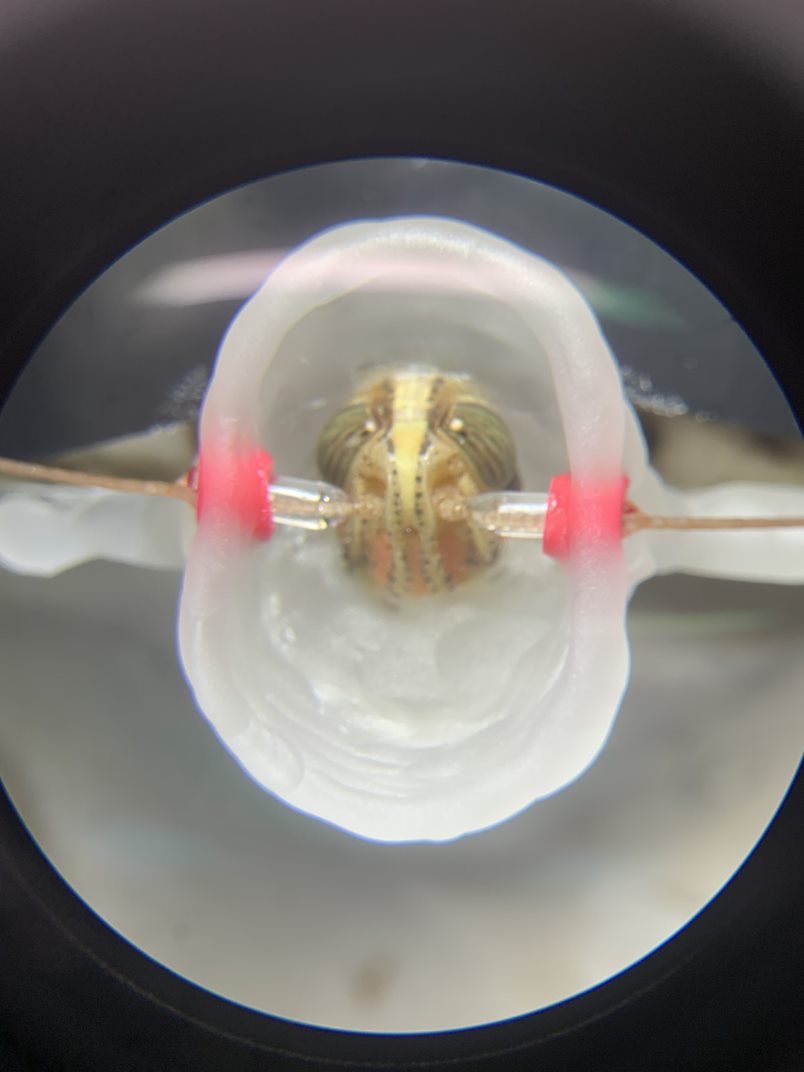A locust’s brain has been hacked to sniff out human cancer
In all scenarios, the animals are believed to be sensing chemicals that men and women emit via physique odor or breath. The mix of substances can fluctuate based on a person’s metabolism, which is thought to adjust when we get ill. But puppies are high priced to practice and look just after. And producing a system that mimics a dog’s nose has proved exceptionally complicated to do, says Debajit Saha, a person of the experts at the rear of the most current operate, which has not however been peer-reviewed.
“These alterations are just about in areas for every trillion,” states Saha, a neural engineer at Michigan Condition University. This makes them really hard to decide up even with point out-of-the-artwork systems, he adds. But animals have developed to interpret such subtle improvements in scents. So he and his colleagues determined to “hijack” an animal mind in its place.

COURTESY OF THE Researchers
The researchers chose to function with locusts since these insects have been nicely analyzed in modern many years. In a preliminary set up, they surgically exposed the brain of a dwelling locust. Saha and his colleagues then inserted electrodes into lobes of the brain that get indicators from the insects’ antennae, which they use to perception odors.
The group also grew three distinctive kinds of human oral most cancers cells, as well as human mouth cells that have been cancer-absolutely free. They utilised a gadget to seize gasoline emitted by each individual of the cell varieties, and shipped each and every of these to the locusts’ antennae.
The locusts’ brains responded to just about every of the cell kinds in another way. The styles of electrical activity recorded were so distinct that when the workforce puffed the gas from one mobile style onto the antennae, they could effectively establish whether or not the cells were cancerous from the recording by yourself.
It is the very first time a dwelling insect mind has been tested as a tool to detect cancer, says Saha.
Natalie Plank, who is establishing nanomaterial-based well being sensors at Victoria College of Wellington in New Zealand, thinks the function is “super cool.” “The probable of just getting in a position to breathe on anything and then know if you are at danger for most cancers … is definitely strong,” she says.
In the experiment, the crew took mind recordings from various locusts and mixed their responses. It presently usually takes recordings from 40 neurons to get a distinct signal, which means the procedure necessitates among 6 and 10 locust brains. But Saha hopes to use electrodes that can file from extra neurons, which would allow for him to get recordings from the mind of a single locust. He also hopes to be ready to use the brain and antennae in a portable unit, which could then be examined on real individuals.







